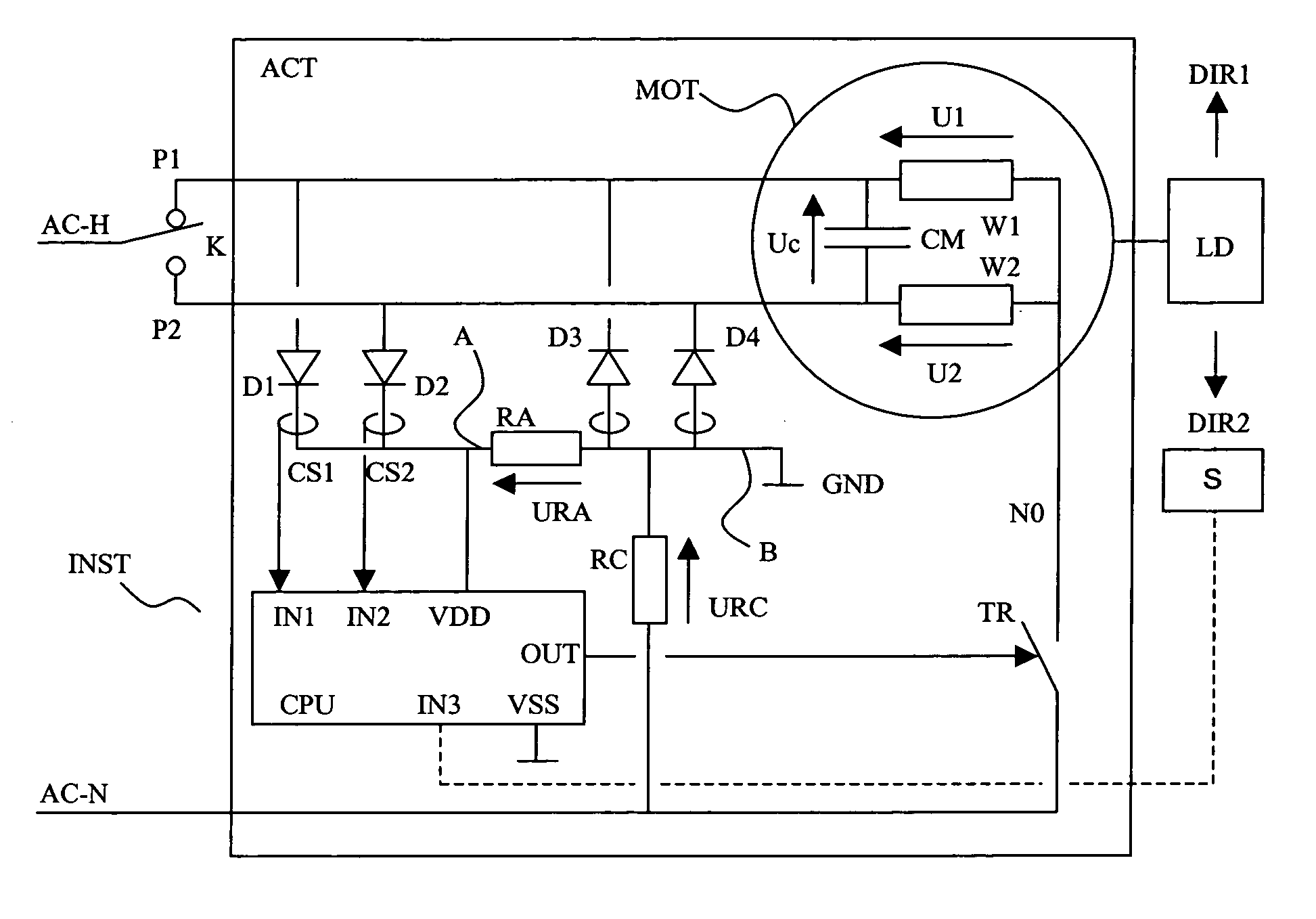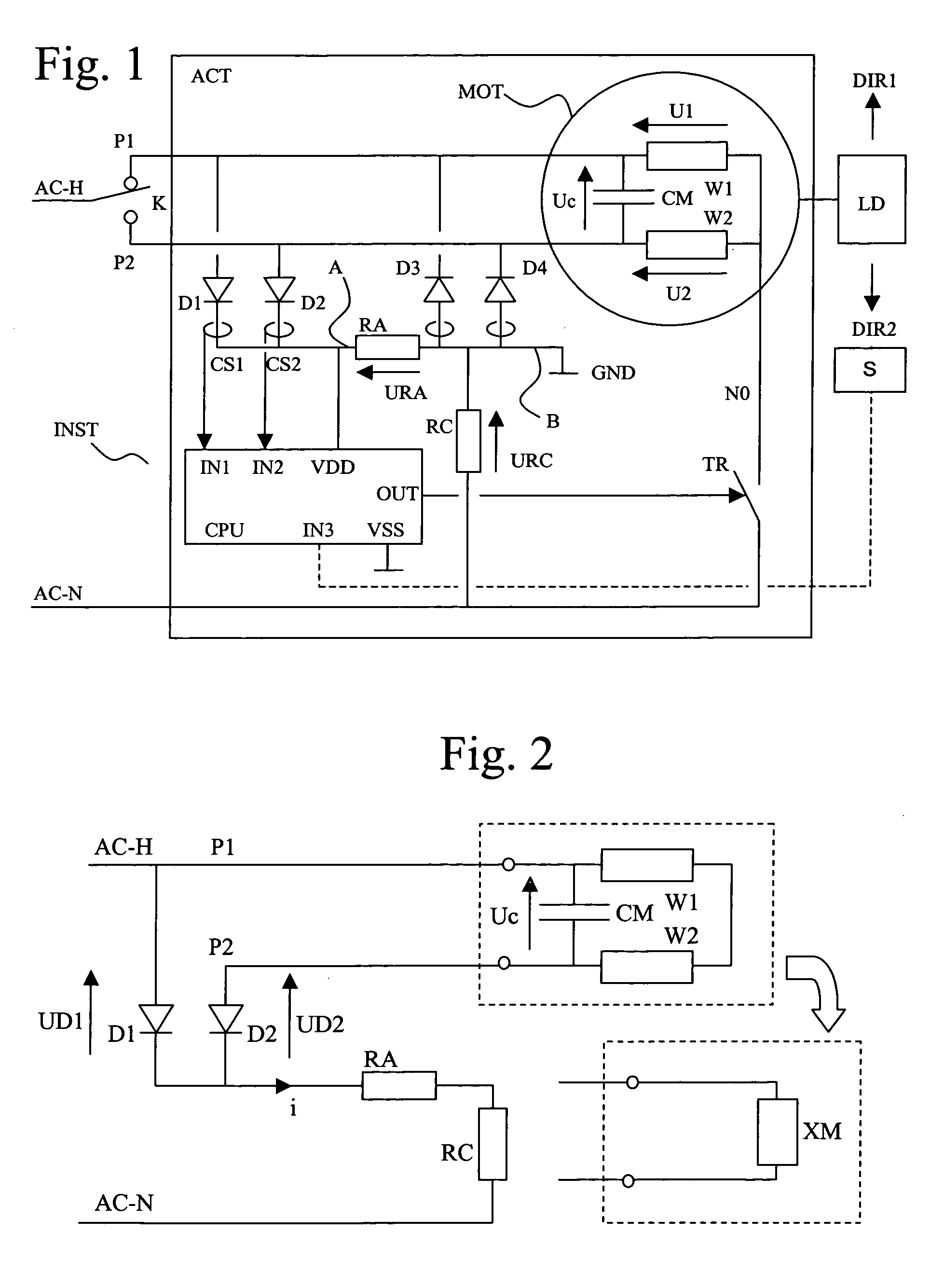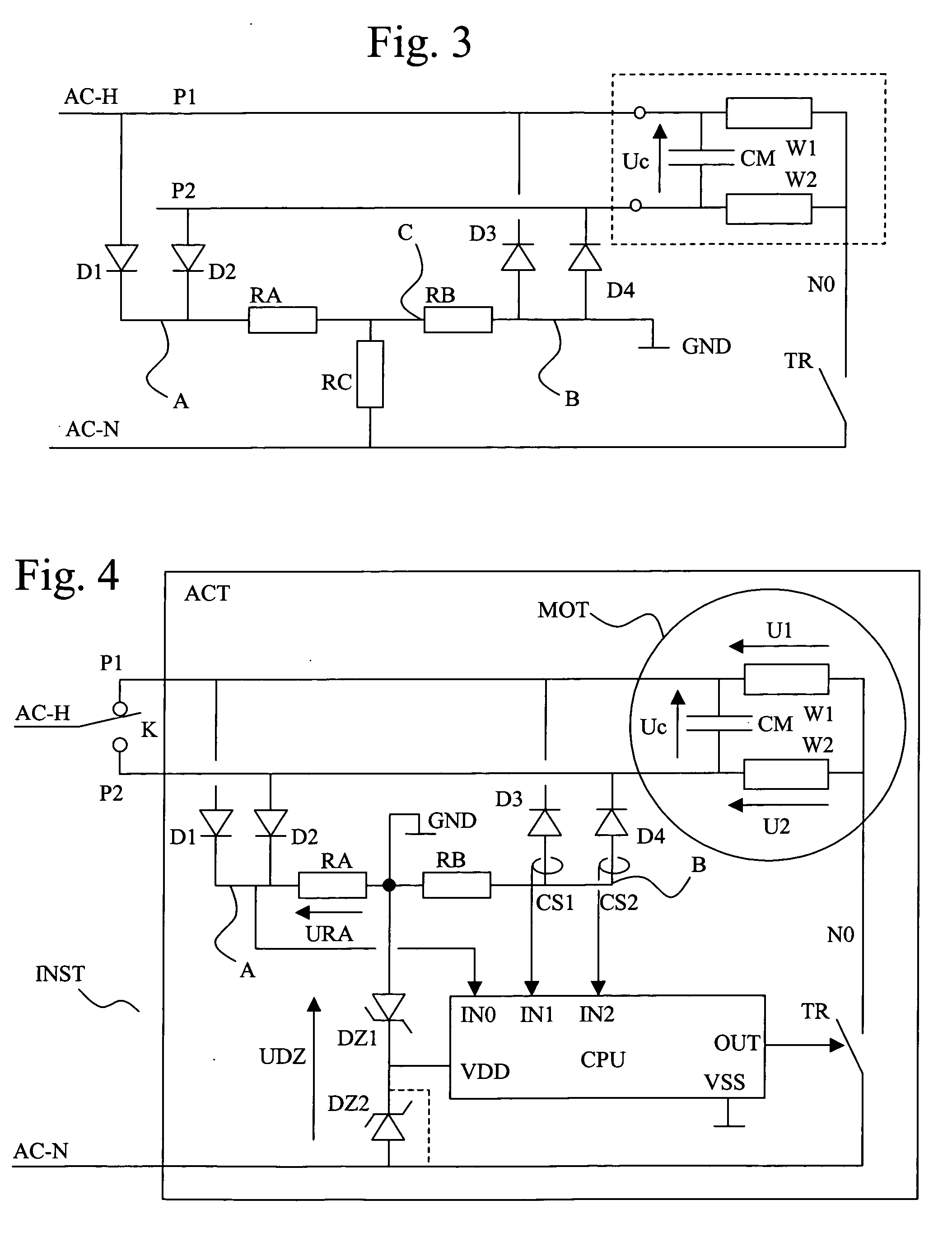Actuator for operating a roller blind and method of operating such an actuator
a technology of roller blinds and actuators, applied in the direction of single-phase induction motor starters, ac motor direction control, electrical equipment, etc., can solve the problems of less accurate method and high cost of capacitors
- Summary
- Abstract
- Description
- Claims
- Application Information
AI Technical Summary
Benefits of technology
Problems solved by technology
Method used
Image
Examples
first embodiment
[0041]FIG. 2 is a simplified electrical circuit diagram of the actuator device when the controlled switch TR is open. The two windings W1 and W2 of the motor are then in series with each other and are in parallel with the motor capacitor C. All of the equivalent dipole XM is therefore either resistive and inductive, or resistive and capacitive.
[0042] When the phase conductor of the mains is connected to the first phase terminal P1 and when the mains voltage is positive, the current branch including the diode D1 short circuits the current branch including the equivalent dipole XM and the diode D2. In practice, if it is assumed that the diode D2 starts to conduct, the voltage UC at the terminals of the equivalent dipole is necessarily positive, therefore the voltage UD1 at the terminals of the diode D1 is greater than the voltage UD2. Since the voltage UD1 is limited (typically 0.8 V), the result is that the more the diode D2 conducts, the more the voltage at its terminals should decr...
second embodiment
[0043]FIG. 3 represents in simplified form the actuator device in which the resistive circuit presents a T architecture between the points A and B and the neutral conductor. A resistor RB is now disposed between the point common to the resistors RA and RC of FIG. 1 and the point B identifying the common cathode of the diodes D3 and D4.
[0044]FIG. 4 represents a third embodiment of the actuator device in which the resistive circuit is also formed by a T between the points A and B and the neutral conductor. A resistor RB is disposed as previously. However, the resistor RC is replaced by two zener diodes DZ1 and DZ2 in opposition. In a variant of this third embodiment which constitutes the preferred embodiment of the invention, just one zener diode is used.
[0045]FIG. 5 represents an oscillogram over time of the voltages at the terminals of the windings of the motor and at the terminals of the motor capacitor CM in the case of a variant of the first embodiment represented in FIG. 1 in w...
third embodiment
[0073] A device according to a second variant of the device differs from the device described previously in that the zener diode DZ2 is replaced by a short circuit (dotted line in FIG. 4). This time, the voltage UDZ is zero when the zener diode DZ1 conducts forward and −UZ when it conducts in reverse. This imbalance tends to shorten the conduction times of the diodes D3 and D4. The main interest of this variant is that the start and end of conduction instants of the diodes D3 and D4 are now linked to the instants at which the voltages U2 or U1 are cancelled out. In particular, the voltage U1 is maximum (amplitude of the mains voltage) a quarter period after the end of conduction of the diode D3. In the conduction range of the diode D1, URA=U1.
[0074] In other words, it is possible with the assembly of FIG. 4 without the diode DZ2: [0075] to identify the control command applied by means of the control switch by analyzing the instantaneous switchings between the diodes D4 and D3, [0076...
PUM
 Login to View More
Login to View More Abstract
Description
Claims
Application Information
 Login to View More
Login to View More - R&D
- Intellectual Property
- Life Sciences
- Materials
- Tech Scout
- Unparalleled Data Quality
- Higher Quality Content
- 60% Fewer Hallucinations
Browse by: Latest US Patents, China's latest patents, Technical Efficacy Thesaurus, Application Domain, Technology Topic, Popular Technical Reports.
© 2025 PatSnap. All rights reserved.Legal|Privacy policy|Modern Slavery Act Transparency Statement|Sitemap|About US| Contact US: help@patsnap.com



